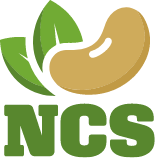Damage
Leaf notching around the leaf margins caused by adult pea and bean weevil (Sitona lineatus) does not significantly affect yield. However, when adults are present they lay eggs leading to larvae. The damage to the nitrogen fixing root nodules by the larvae is serious and can reduce yield. Adults migrate in early spring from over-wintering sites (mainly grassy uncultivated edges of fields previously cropped with peas or beans) when temperatures start to warm.
Pheromone traps from Agralan can be used to monitor the pest. The procedure involves placing five traps on the headland of a field where a pea or bean crop has been previously grown. The threshold for crop treatment is an average of 30 weevils per trap per day.
Appearance
Adult weevils are light grey-brown and are around 4-5mm in length. Their abdomen and thoraz are adorned in stripes. The larvae are white in colour with a brown-yellow head and are around 6mm in length.
Control Recommendations
There have been reports of poor performance of the pyrethroid insecticides currently used to control the pest and it is now known that the weevil has evolved resistance to them. The Processors and Growers Research Organisation (PGRO) commissioned research to test for pyrethroid resistance. Dr Steve Foster at Rothamsted Research found that there are populations of adult weevils that are resistant to a representative pyrethroid when it is applied at an equivalent dose to that used in the field. The next step is to establish the mechanism conferring this resistance which is likely to extend to other pyrethroids. In the meantime, growers should be aware that treatment with these compounds against this pest may not be effective.
Fleece covering crops with the edges buried can provide an alternative control approach but needs to be in place before seedlings emerge and before the pest arrived. Extra fertiliser application may be required because the pest attacks the nitrogen fixing root nodules. Research into an entomopathogenic fungus for controlling the pea and bean weevil has started but there is not yet a commercial product.
Related links
- Processors and Growers Research Organisation
- Insecticide resistance in pea and bean weevil detected in UK
Information from Rothamsted's Croprotect webpage supported by BBSRC NERC Sustainable Agriculture Research & Innovation Club









